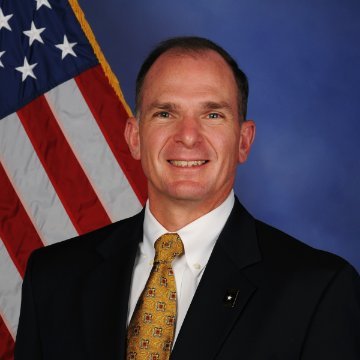Can the Army build on ITES-2S momentum?

The key to the ongoing success of the Army's IT contracting vehicle is incorporating cloud and cybersecurity solutions into the next iteration.

CHESS Project Director Thomas Neff. (Image: Thomas Neff / LinkedIn)
The Army’s massive procurement vehicle for IT services is gradually moving to a new phase.
Vendors say the IT Enterprise Solutions–2 Services (ITES-2S) contract has been effective because it gives agencies flexibility in the IT services they buy.
Given that multiple agencies have placed billions of dollars' worth of orders through the contracting vehicle to date, how ITES-3S pans out could have a big impact on the future of federal IT contracting.
The fundamentals
ITES-2S dates back to 2006, when the Army component in charge of the contracting vehicle -- Computer Hardware Enterprise Software and Solutions, or CHESS -- awarded contracts to 16 prime contractors, five of which were designated small businesses. (Three of those five small businesses have since been acquired).
Since then, agencies have issued about $10 billion in contracts through the vehicle, said Stephani Antona, a research analyst at Deltek.
One of the prime contractors is systems integrator Harris IT Services. The company’s president, Wayne Lucernoni, said the Army has planned ahead and communicated proactively with industry in advance of the transition to ITES-3S. Other agencies would do well to emulate the Army’s model of tapping vendors to help shape a procurement vehicle, added Lucernoni, who estimated his firm has generated about $500 million in revenue through ITES-2S since 2007.
Other companies also appreciate the contracting vehicle’s flexibility. “The fact that it’s totally decentralized in the Army means it’s quite flexible…and we adjust to the particular contracting shop that’s using the vehicle,” said Mike Yocom, senior vice president and general manager at Pragmatics, one of two small-business prime contractors on ITES-2S.
The contract’s flexibility, in fact, has made it a backup plan of sorts for agency contracting. For example, the Air Force switched to ITES-2S when it ran into delays on its own Network-Centric Solutions-2 group of contracts.
There is also no contracting fee for using ITES-2S, which the Army sees as a big incentive in tight fiscal times.
“As defense budgets are reduced across the [Future Years Defense Program], the ability for all of [the Defense Department] to use ITES-3S to compete task orders without having to budget for a contract access fee is a real differentiator,” CHESS Project Director Thomas Neff said via email. He declined to be interviewed for this article and instead offered written responses to questions.
ITES-2S also avoids the bureaucratic speed bump of requiring agencies to coordinate contracting with an additional office, said Larry Smith, ITES-2S program manager at SAIC.
The program management office for ITES-2S “essentially delegates that responsibility down to the contracting officer to comply with all of the basic contracts and the [Federal Acquisition Regulation] clauses, and then they can use the CHESS portal to release it, which makes it a simpler and easier way of getting [requests for proposals] on the street,” he said.
Key hurdles
CHESS issued a request for information for ITES-3S in February 2013, and industry is waiting for the follow-up RFP.
CHESS is intent on attracting more small businesses, and “we believe the planned structure of ITES-3S will support that goal,” Neff said. “We also want the scope to include IT services that enable the DOD to meet mission requirements in the areas of cyber and cloud.”
Although cybersecurity and cloud computing were not designated service areas under ITES-2S, Neff said he wants ITES-3S to “enable application owners the ability to access highly qualified companies that can help migrate their applications to an approved cloud environment.”
For ITES-3S, CHESS intends to define small businesses as those with annual revenue of $27.5 million or less. But Yocom said he is concerned that the expanded pool of small businesses will throw his midsize company in with much bigger firms.
Competing directly with industry heavyweights for task orders would be “very challenging for us, and so we’re anxious to see how it sort of takes shape,” Yocom said.
CHESS will also have to deal with any competitive tension that might come from expanding the number of companies using the new contracting vehicle. Handling that will put “a lot more pressure on the contracting side” of the small staff of CHESS, Antona said.
Next steps
In March, the Army extended the ordering period for the IT Enterprise Solutions–2 Services (ITES-2S) contract through April 2018, a move that will allow the Army's Computer Hardware, Enterprise Software and Solutions staff more time to draft the request for proposals for ITES-3S.
Wayne Lucernoni, president of Harris IT Services, said Army officials are wise to take it slow. "They've allowed themselves time to not rush something out that they have to go through the painful process of editing," he added.
Vendors said they hope ITES-3S will continue its predecessor's broad applicability across government.
Mike Yocom, senior vice president and general manager at Pragmatics, said ITES-3S can improve on the previous contract by offering a streamlined set of contracting reports.
"CHESS kind of has blinders on as far as what’s happening with [ITES-2S], and so it depends very much on the prime contractors to report what's happening with the awards," he said.
NEXT STORY: IT overlaps high on GAO's duplication list


